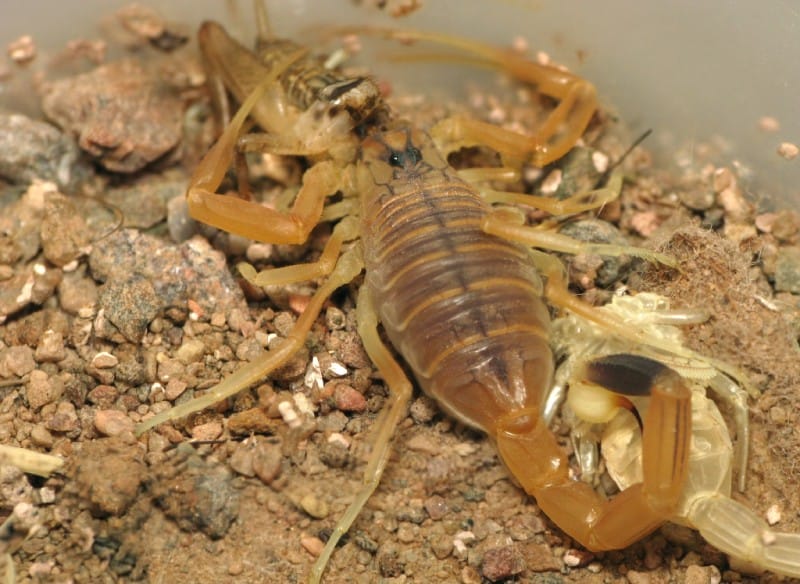
DeathStalker Scorpion Facts
- The Deathstalker Scorpion bears the scientific name of Leiurus quinquestriatus. It represents a truly impressive species of scorpion in the Buthidae family.
- This remarkable arachnid also ranks as an extremely dangerous variety of scorpion. To clarify, its venom contains an incredibly powerful combination of neurotoxins.
- It remains capable of delivering a lethal sting to some. This includes young children, the elderly, or the otherwise immune impaired. Yet, a healthy adult is likely to survive its sting.
- However, the sting of this particular scorpion ranks as extremely painful.
- The invertebrate also currently ranks as the third most venomous scorpion on earth. On the other hand, its venom seems to be of considerable interest to medical researchers.
- One of the unique components of Deathstalker Scorpion venom shows great promise in the treatment of brain tumors.
Related Articles
Euscorpius Lycius Lesser Brown Scorpion Asian Forest Scorpion
Deathstalker Scorpion Physical Description
The fascinating Deathstalker Scorpion exhibits sexual dimorphism. This occurs due to the fact the males of the species average about 3 in (7.5 cm) in length.
The females, however, average about 4 in (10 cm) in length. Despite the difference in length, both genders average roughly 2.5 grams in weight.
In color, it shows primarily a pale yellow. Yet horizontal stripes of a light gray also appear, as well as occasional random patches of orange-yellow.
It possesses two eyes on the top of its head. It also has several pairs located along the side of the head.
Uniquely, the tail commonly displays a single dark section, located just before the stinger.
- Kingdom: Animalia
- Phylum: Arthropoda
- Class: Arachnida
- Order: Scorpiones
- Family: Buthidae
- Genus: Leiurus
- Species: L. quinquestriatus
Photographer: מינוזיג
CC License: https://bit.ly/1xMszCg
Deathstalker Scorpion Distribution, Habitat, and Ecology
The Deathstalker Scorpion inhabits a quite specific range. This extends from the Middle East to Northern Africa. It also inhabits limited portions of Asia.
Within that range, it primarily inhabits extremely arid regions of the world. As a result, this includes scrubland and desert habitats. Consequently, individuals most commonly live under rocks or in abandoned animal burrows.
This arthropod also evolved as primarily nocturnal in nature. As a desert carnivore, it typically preys on insects, earthworms, spiders, centipedes, and even other scorpions.
In addition, it hunts as an ambush predator. Consequently, it relies on the sensitivity of the hairs on its legs to detect vibrations.
Finally, despite the toxicity of its venom, it, unfortunately, continues to be rather popular as exotic pets.
Species Sharing Its Range
Fennec Fox Medusa’s Head Boomslang
Check out our other articles on Giant Camel Spider, Arizona Bark Scorpion, 7 Stunning European Flowering Plants, Atlantic Trumpetfish

